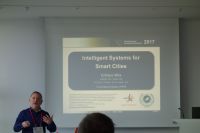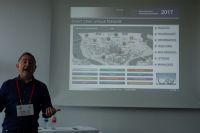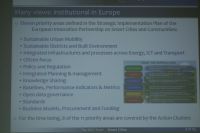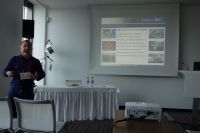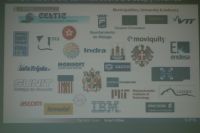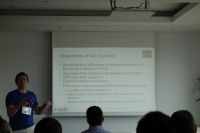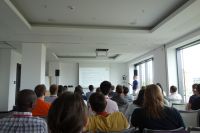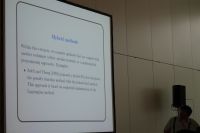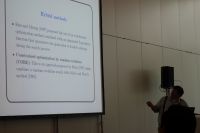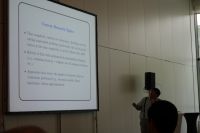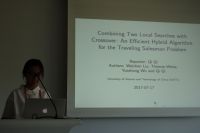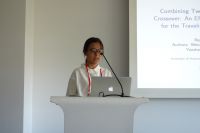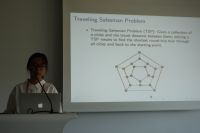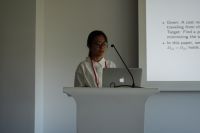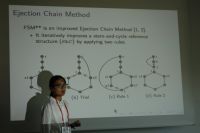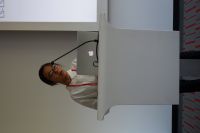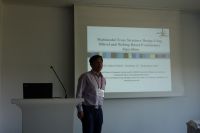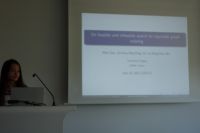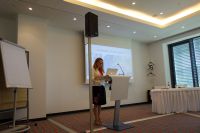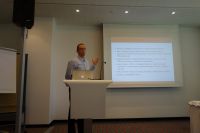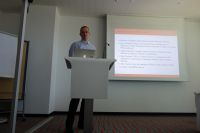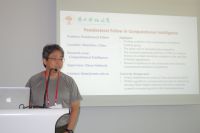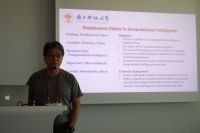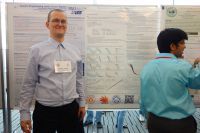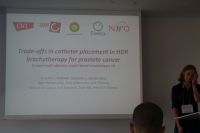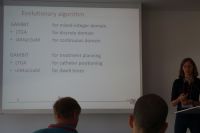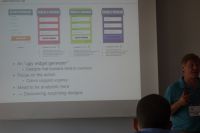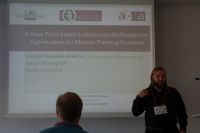I am currently attending the Genetic and Evolutionary Computation Conference (GECCO'17), taking place from July 15 to 19, 2017 in Berlin, Germany. GECCO is the primary event in the world on Evolutionary Computation. I have attended it before in 2008, 2010, 2012, and 2016 and always enjoyed this conference very much. Our group has two papers there this year, namely:
- Weichen Liu, Thomas Weise, Yuezhong Wu, and Qi Qi. Combining Two Local Searches with Crossover: An Efficient Hybrid Algorithm for the Traveling Salesman Problem. In Proceedings of the Genetic and Evolutionary Computation Conference (GECCO'17), July 15-19, 2017, Berlin, Germany, New York, NY, USA: ACM Press, pages 298-305, ISBN: 978-1-4503-4920-8.
doi:10.1145/3071178.3071201 / paper / slides - Qi Qi, Thomas Weise, and Bin Li. Modeling Optimization Algorithm Runtime Behavior and its Applications. In Proceedings of the Genetic and Evolutionary Computation Conference (GECCO'17) Companion, July 15-19, 2017, Berlin, Germany, New York, NY, USA: ACM Press, pages 115-116, ISBN: 978-1-4503-4939-0.
doi:10.1145/3067695.3076042 / paper / poster
July 15: Tutorials and Workshops
Today I attended several highly interesting events. I started with the "Introduction into Randomized Continuous Optimization" by Nikolaus Hansen and Anne Auger, a detailed and easy-to-follow tutorial on how several evolutionary approaches for numerical optimization work (and why they have been designed to work the way they do). The talk mainly focused on different flavors of Evolution Strategies (ESes), ranging from the (1+1) ES to the CMA-ES. These algorithms maintain one or multiple good candidate solution and sample the space around them by drawing normally distributed random numbers. Special emphasis was put on the features of the multi-variate normal distributions used for this sampling, on how ranking-based selection approaches, invariants that an optimization algorithm should have, and on why step-size adaptation is necessary to achieve good results in reasonable time. Even though I already work with ESes for several years, this tutorial provided me with some additional perspective while it was also structured such that even a novice in the field could easily follow it.
After this tutorial, I went to the Second Workshop on Industrial Applications of Metaheuristics (IAM). Pablo Vallendor Pellicer presented several applications of metaheuristics that help the world-leading steel producer ArcelorMittal to reduce their waste and increase their efficiency. This talks showed very clearly that in order to squeeze out the last bit of efficiency, to reduce the last bit of waste, one cannot rely on manual planning but has to resort to automated support that only optimization algorithms can provide. In the second talk, Neil Urquhart showed how parallel coordinate diagrams can help the decision makers to not just pick interesting solutions in a multi-objective problem but also to specify their interests. Erik Dovgan showed how efficient human-like driving behaviors can be synthesized using multi-objective optimization. Then, Maizura Mokhtar presented another application of optimization methods used by industry partners: the identification of robust waste heat recovery systems. This was another example on how design parameters that elude manual optimization can be optimized by clever algorithms and that the actual selection of the right solution out of many possible non-dominated choices can, as well, be supported by intelligent techniques. Finally, Thomas Stützle finished the session with the introduction of a highly-configurable Artificial Bee Colony Optimization method for the Economic Dispatch Problem.
As practitioner in optimization, I know about the importance of properly visualizing the results. Therefore, I attended the workshop "Visualisation Methods in Genetic and Evolutionary Computation (VizGEC)". First, Xavier Blasco presented an "Interactive tool for analyzing multiobjective optimization results with Level Diagrams" implemented in MatLab and available online. The DU Map by Eric Medvet and Tea Tušar allows for investigating the development of a population in a Genetic Algorithms over time in terms of its diversity and the effectiveness of the genes. Penousal Machado showed that visually aesthetics and informativeness cannot that easily be codified in objective functions for optimizing. Finally, Anton Bouter presented an application for visualizing the solutions of a multi-objective medial application in hospitals.
July 16: Tutorials
Today I attended three really excellent tutorials. As practitioner in optimization, the tutorial of Enrique Alba on Intelligent Systems for Intelligent Cities at the morning was particularly interesting. This field is an emerging huge application area for optimization methods which comes with lots of challenges but also opportunities: all optimization problems considering cities are inherently large-scale and dynamic, require lots of exact data but also involve many uncertainties and missing data as well. So technologies verified on smaller-scale, static problems may not really work. So we need to develop techniques for large-scale problems. But it does not end there, as these techniques also need to be implemented properly, following code guidelines and quality metrics. I was happy to hear the software engineering aspects mentioned, since they are usually complete ignored in research, but at our institute, we emphasize them following a rapid prototyping methodology. Modern, intelligent cities provide many possible applications, from environment over mobility, traffic management, energy and building management, waste disposal, dynamic networks between cars, and so on. There are hundreds of ways in which our experience in optimization can make the life of the inhabitants of a city more convenient and happy.
Franz Rothlauf gave a tutorial on Representations for Evolutionary Algorithms. If we solve an optimization problem, then we can distinguish the data structures for candidate solutions which are meaningful for the user from the data structures representing them inside the optimization algorithm by the search operations. Often they are the same, but also quite often they are not. The choice of these two data structures and the mapping between them is the representation. The choice of representation is extremely important, as it has major impact on the optimization algorithm performance.
Carlos Artemio Coello Coello then gave a tutorial on Constraint Handling Techniques used in EAs. In the most basic optimization problem, we have one optimization goal, i.e., one objective function. These problems are called single-objective problems. In multi-objective problems, we have multiple objective functions. In constraint optimization problems, we have at least one goal and one or multiple, well, constraints. Like objective functions, constraints are functions mapping a candidate solution to a real number. Different from an objective, which should always be optimized, a constraint has a range of values where it is met and in the rest of the values if is not met (rendering the candidate solution infeasible). Most common are inequality constraints (e.g., must be greater or equal to zero) and equality constraints (must be zero). How to solve constraint optimization problems means finding feasible solutions with good objective values. In this tutorial, a wide variety of techniques was presented, annotated with the rich experience of the presenter.
July 17: Sessions, Job Market, and Poster Session
Today I attended the Evolutionary Combinatorial Optimization and Metaheuristics (ECOM1) session, which started with the presentation of Qi Qi, my master's student, on our joint work on Combining Two Local Searches with Crossover to build an Efficient Hybrid Algorithm for the Traveling Salesman Problem. The next talk was Xiaodong Li introducing Multimodal Truss Structure Design Using Bilevel and Niching Based Evolutionary Algorithms followed by a presentation of Ankit Chauhan presenting on Approximating Optimization Problems using EAs on Scale-Free Networks. The last presenter was Wen Sun showing her work On Feasible and Infeasible Search for Equitable Graph Coloring.
The session was followed by the GECCO Job Market, organized by Tea Tušar, where I presented our open positions. In the evening, Qi Qi and I presented our poster on Modeling Optimization Algorithm Runtime Behavior and its Applications.
July 18 and 19: Sessions
During these two days, I attended various different sessions and did not take that many photos. Also I got a cold, incapacitating me somewhat, meaning that I skipped the key notes, although I'd really liked to attend them.









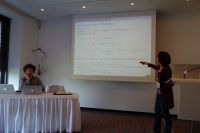
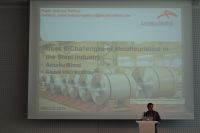
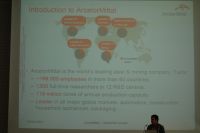
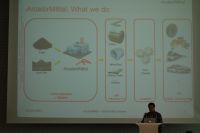


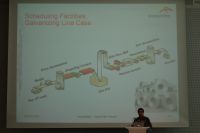
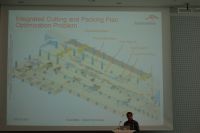
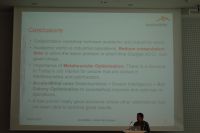
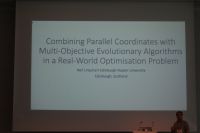
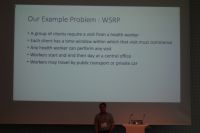
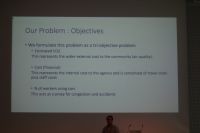
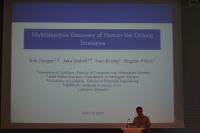
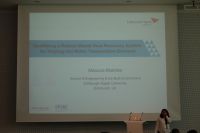
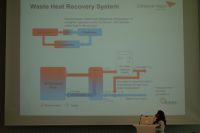

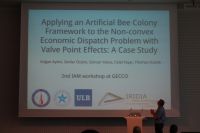
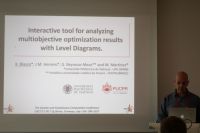
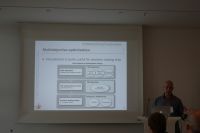
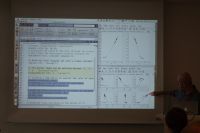
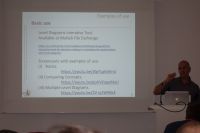
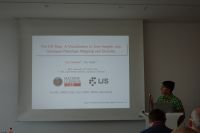
![Penousal Machado discussing "[On] the Role of Aesthetics in Genetic Algorithms Applied to Graph Drawing" 0715_penousal_machado](http://iao.hfuu.edu.cn/images/events/2017/20170715_gecco/thumbs/0715_penousal_machado.jpg)

